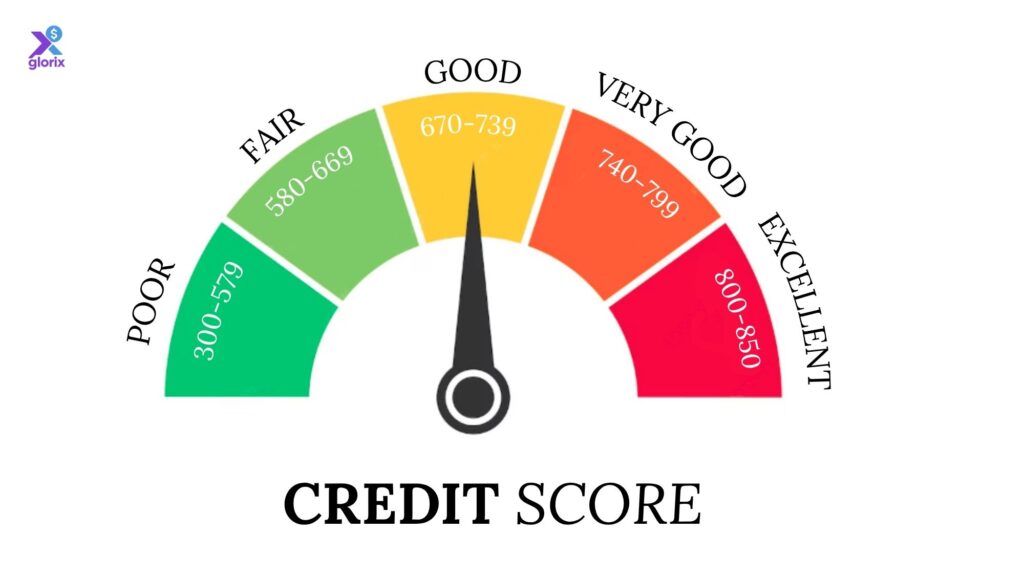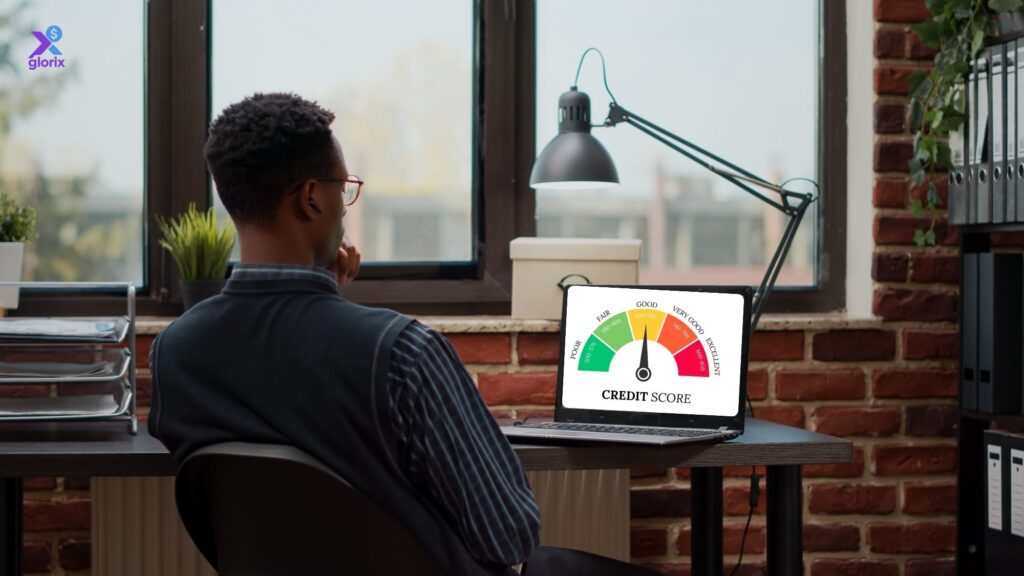Introduction
If you’re wondering how to build a credit score in the USA, this step-by-step guide will help you start strong and grow your financial reputation quickly.
Why Credit Matters More Than You Think
Just Imagine ….
You’ve finally found your dream apartment. It’s in the right location, fits your budget, and even has the balcony view you’ve always wanted. You’re ready to sign the lease, but then the landlord looks at your credit score and isn’t impressed. Suddenly, you lose the chance because your credit isn’t good enough.
Or maybe you’re at a car dealership, excited to buy a new car, but your loan gets denied or approved with a very high interest rate. Sounds familiar? That’s how much your credit matters, even if you don’t always think about it.

Understanding the Basics of a Credit Score
What Is a Credit Score, and How Does It Work
A credit score isn’t just a number. It shows how reliable you are with money. Lenders, landlords, and even some employers use it to see if they can trust you financially. In simple words, it’s your money reputation. This three-digit number, usually between 300 and 850, shows how well you handle credit, how you pay bills, how much debt you have, and how long you’ve been using credit. A high score means you manage money well. A low score can make things cost more, with higher interest rates and fewer chances to get approved.

How Does Credit Impact Your Everyday Life
Here’s the thing: your credit score doesn’t only matter for big things like home or car loans. It also affects smaller parts of your everyday life.
- Want a phone plan without paying a large deposit? You need good credit.
- Trying to rent an apartment in a busy city? Landlords will probably look at your score.
- Even insurance companies might check your credit to set your rates.
In simple terms, your credit affects your chances in many ways, often before you even notice it.
Common Myths About Credit Scores
Keeping a small balance helps your credit—not true; paying in full is better.
Checking your own score lowers it—not true; it’s safe to check.
Closing old cards improves your score—not true; old accounts help your score.
Paying late doesn’t matter—not true; on-time payments are very important.
Just having a high credit limit improves your score—not true; using credit responsibly matters most.

Key Credit Scoring Models in USA: FICO vs. VantageScore
Two main models are used to calculate your credit score:
FICO Score
Created by the Fair Isaac Corporation.
Used by over 90% of lenders in the USA.
Scores range from 300 to 850.
VantageScore
Developed by the three major credit bureaus: Experian, Equifax, and TransUnion.
Scores also range from 300 to 850, but the criteria are slightly different.
Easier for newcomers to get a score because it requires less credit history.
Both models look at similar factors, so improving your FICO or VantageScore usually means following the same good habits: paying bills on time, keeping balances low, and having a healthy mix of credit.
Credit Score Ranges: Check Where Do You Stand
Knowing your credit score range helps you set realistic goals while building credit in the USA.

| Credit Score Range | Rating | Meaning |
|---|---|---|
| 800–850 | Excellent | You’ll get the best loan and credit card rates. |
| 740–799 | Very Good | You’re seen as a reliable borrower. |
| 670–739 | Good | You’ll likely be approved for most credit. |
| 580–669 | Fair | You may face higher interest rates. |
| 300–579 | Poor | It’s harder to qualify for loans or credit. |
Alright, If your score is low, don’t worry; following credit-building steps can help you improve it over time.
Why Understanding Credit Basics Matters
Learning the basics of credit is key if you want to build a score from scratch or improve it quickly. By practicing good habits—paying on time, keeping balances low, and monitoring your reports—you can gradually raise your score and access better financial opportunities.
Understanding what affects your credit score gives you control over your financial future. Managing credit well isn’t just about a number—it’s about building trust, stability, and financial freedom.

Factors That Affect Your Credit Score
Your credit score isn’t random. It’s based on several key parts of your credit history. Here’s a simple breakdown:
Payment History (35%)
This has the biggest impact on your score. Always pay your bills on time, because even one missed payment can lower your score.Credit Utilization (30%)
This is how much of your available credit you’re using. Try to keep it below 30%. For example, if your credit limit is $1,000, don’t carry more than $300 in balances.Length of Credit History (15%)
The longer your accounts have been open, the better. It shows lenders that you have experience handling credit responsibly.New Credit Inquiries (10%)
Every time you apply for a new credit card or loan, a “hard inquiry” shows up on your report. Too many in a short period can lower your score.Credit Mix (10%)
Having different types of credit—like credit cards, installment loans, or car loans—can help. Lenders see it as a sign that you can manage various forms of credit effectively.
The Good News: You Can Build It!!!!!!
Bro, building good credit isn’t rocket science; it’s 100% doable. Anyone can do it. Whether you’re just starting or trying to fix past mistakes, small and steady actions can make a big difference. Think of it like building muscle—being consistent and making smart choices help strengthen your financial record. With the right habits, you can unlock new opportunities and save a lot of money over time.

How to Build a Credit Score from Scratch in the USA? (Step-by-Step)
Starting from zero can feel overwhelming, but don’t worry. Building your credit score in the USA is completely possible with a few smart and steady steps. Whether you’re a student, new to the country, or working to rebuild your financial reputation, the key is to start small, stay consistent, and let time work for you.
In this section, we’ll go over the best ways to build credit quickly and safely, even if you’ve never had a credit card or loan before.
Step 1: Get a Secured Credit Card
Let’s explore how credit cards help you build a credit score in the USA faster. A secured credit card is one of the easiest and safest ways to start building your credit score.
What Is a Secured Credit Card?
A secured credit card requires a cash deposit as collateral, usually between $200 and $500. That deposit becomes your credit limit. For example, if you deposit $300, your spending limit will be $300.
How It Works
You use it just like a regular credit card.
Make small purchases and pay them off in full each month.
Your payment history is reported to the main credit bureaus (Experian, Equifax, and TransUnion).
How to Use It Responsibly
Keep your credit utilization below 30%.
Never miss a payment—setting up autopay can help.
After about six months of responsible use, you can often upgrade to an unsecured card and get your deposit back.
Pro Tip: Secured cards like Discover it® Secured or Capital One Platinum Secured are popular starter options in the USA.
Step 2: Become an Authorized User
If you have a trusted family member or close friend with good credit, ask to become an authorized user on their credit card.
Why This Works
As an authorized user, the card’s history shows up on your credit report, helping you build a positive record—even if you don’t use the card yourself.
What to Keep in Mind
Only do this with someone who has a strong payment history and low balances.
Make sure the card issuer reports authorized users to all three credit bureaus.
You don’t need to spend anything—just being on the account can help your score improve
Step 3: Apply for a Credit-Builder Loan
If you don’t want to use a credit card, a credit-builder loan from a bank or credit union is another smart way to build credit in the U.S.
How a Credit-Builder Loan Works
The lender puts a small amount (usually $500 to $1,000) into a locked savings account.
You make fixed monthly payments on that amount for about 6 to 12 months.
After you finish paying, you get the money, and your payment history is shared with credit bureaus.
This is a safe and organized way to prove to lenders that you can make regular payments, which helps build your financial credibility over time.
Example Programs: Local credit unions and apps like Self or CreditStrong offer good credit-builder loan options.
Step 4: Use Your Credit Card Regularly but Wisely
After getting your first credit card, the main thing is to use it consistently and responsibly. Lenders like to see that you can handle credit well.
Smart Credit Usage Tips
Use your card for small purchases, such as groceries or online subscriptions.
Pay your full balance every month. You don’t need to keep a balance to build credit; that’s just a myth.
Keep your spending low and avoid using your entire credit limit.
These habits show lenders that you can manage credit responsibly, which helps improve your credit score faster.
Step 5: Set Up Autopay and Payment Reminders
The best way to make sure you never miss a payment is to automate them.
Why Autopay Helps
Makes sure your bills are always paid on time, which is very important for your credit score.
Helps you avoid late fees and bad marks on your credit report.
Builds a steady payment history that improves your credit over time.
If you like handling payments yourself, set reminders a few days before the due date. Apps like Credit Karma, Mint, or your bank’s mobile app can help you keep track easily.
If you follow these steps consistently, you can successfully build a credit score in the USA and secure better loan and financial opportunities. When you’re starting to build credit, it’s not about doing big things but about staying consistent and responsible. Begin with a secured credit card, become an authorized user on someone’s account, or get a credit-builder loan. Use your card carefully, make all payments on time, and allow your credit history to grow slowly. In just a few months, you’ll notice improvements, and within a year, you’ll have a solid base for your financial future in the U.S. Remember, patience, steady habits, and responsibility are the real keys to building lasting credit.

Smart Habits That Grow Your Credit Score Over Time
Beginners can build a credit score in the USA by following these simple habits. Building a good credit score is not only about opening new accounts. It’s about building steady and smart habits over time.
Once you’ve started with a secured card, an authorized user account, or a credit-builder loan, the next step is to stay consistent and manage them well. That’s what helps you reach long-term success.
In this section, you’ll learn the most effective habits to improve your credit score in the U.S., maintain a strong financial record, and avoid common mistakes.
Habit 1: Always Pay Bills on Time
One of the most effective ways to build a credit score in the USA is to pay all your bills and credit card balances on time. Your payment history has the biggest impact on your credit score. Missing or delaying payments can lower your score, while paying on time helps it go up.
Tips for Staying On Track
Turn on autopay for regular bills.
Keep a list or calendar of all due dates, including rent and utility bills if they’re reported.
Even one small late payment can affect your credit reputation.
Pro Tip: Some landlords and utility companies share on-time payments with credit bureaus. Joining these programs can help raise your credit score.
Habit 2: Keep Credit Utilization Under 30%
Beginners can build a credit score in the USA faster by keeping their credit utilization below 30%. Credit utilization shows how much of your total available credit you’re using. Keeping this number low tells lenders that you manage credit wisely and aren’t relying too much on borrowed money.
How to Calculate It
Example: If your credit limit is $1,000 and you owe $250, your utilization rate is 25%.
Try to keep your utilization below 30%, and even lower if possible.
Smart Strategies
Pay off your balance before your statement date so a lower amount gets reported.
Use more than one credit card instead of maxing out a single one.
Don’t keep a balance thinking it helps your credit; that’s just a myth.
Habit 3: Avoid Applying for Too Many New Cards at Once
Every time you apply for a new credit card, it causes a hard inquiry, which can temporarily lower your credit score.
What You Should Do
Only apply for cards you truly need.
Spread out new credit applications over several months.
Focus on managing your current accounts instead of constantly seeking new ones.
Following this habit helps keep your credit profile strong and shows lenders that you’re careful and responsible.
Habit 4: Monitor Your Credit Report Regularly
Keeping an eye on your credit report is important for building credit in the U.S. Mistakes or old information can lower your score unfairly.
How to Monitor
You can get a free credit report from each bureau once a year at AnnualCreditReport.com.
Use apps like Credit Karma or Experian to track your score and notice trends.
Check for errors, such as wrong balances or accounts that aren’t yours.
Habit 5: Correct Errors Immediately
Responsible credit card usage is essential when you’re trying to build a credit score in the USA and maintain it. Errors on your credit report can hurt your score for a long time if you don’t fix them.
Steps to Fix Errors
Find any mistakes on your credit report.
File a dispute with the credit bureau that reported the error.
Provide documents to prove your claim.
Follow up until the problem is resolved.
Fixing errors makes sure your credit score accurately shows your financial behavior and avoids delays when applying for loans or credit cards.
The most successful people at building credit understand that steady habits matter more than quick tricks. Paying bills on time, keeping your credit use low, checking your credit report, and fixing mistakes are all small steps that add up to a strong credit score. By practicing these habits regularly, you can keep improving your credit in the U.S. and open the door to better financial opportunities.

Common Mistakes to Avoid When Building Credit
Building a strong credit score depends on smart and consistent habits, but even minor mistakes can hold you back. Many beginners accidentally make errors that can hurt their creditworthiness or slow their progress toward credit goals.
In this section, we’ll go over the most common mistakes to avoid when building credit in the U.S. and show you how to prevent them.
Mistake 1: Closing Old Accounts Too Early Immediately
It may seem sensible to close old cards you don’t use, but doing so can actually hurt your credit score.
Why This Matters
The length of your credit history makes up 15% of your score.
Closing older accounts lowers your average account age, which can reduce your score.
What to Do Instead
Keep old accounts open, even if you rarely use them.
Make a small purchase occasionally to keep the account active.
This simple change helps protect your credit score while you build credit from scratch.
Mistake 2: Carrying a Balance “To Build Credit”
Some people think keeping a balance will boost their credit, but this is a common credit card myth.
Why It’s Wrong
Carrying a balance doesn’t help build credit faster and only adds extra interest.
High balances increase your credit utilization, which can lower your score.
Smart Habit
Always pay your full balance each month.
Focus on using credit responsibly and paying on time instead of owing money.
Mistake 3: Ignoring Small Debts That Can Go to Collections
Even tiny debts, like a $20 late phone bill, can hurt your credit if they go to collections.
How to Avoid This
Keep track of all bills, including utilities, subscriptions, and small loans.
Pay on time or work out a plan with creditors before debts go to collections.
Check your credit report regularly to spot any missed accounts.
Handling small debts promptly prevents negative marks and helps keep your credit trustworthy.
Mistake 4: Not Diversifying Your Credit
Relying on just one type of credit, like a single credit card, can limit your credit score growth.
Why It Matters
Credit scoring models prefer a mix of credit types, such as:
Credit cards
Installment loans (like personal or auto loans)
Credit-builder loans
Having different types of credit shows lenders you can handle various financial responsibilities.
Pro Tip:
Start small; one credit card and a credit-builder loan are enough to show variety.
Don’t open many new accounts at once; focus on using credit responsibly rather than having many accounts.
Building credit in the U.S. isn’t just about doing the right things, it’s also about avoiding mistakes that can slow you down. By keeping old accounts open, paying off balances in full, managing small debts quickly, and maintaining a mix of credit types, you can steadily improve your score without setbacks. Staying consistent and aware are your best tools for building a strong financial future.

Real-Life Example
How I Built My Credit Score in the USA
When I first came to the USA, I didn’t even know what a credit score was. In my home country, it wasn’t something I needed, and the concept of “borrowing responsibly” was completely new to me. I soon realized that without a credit history, even basic things like renting an apartment or getting a phone plan were difficult. That’s when I decided to start building my credit score in the USA, step by step.
Starting From Scratch
I started with a secured credit card, depositing $300 and using it for small monthly expenses like groceries and subscriptions. I made sure to pay the full balance on time every month. This simple routine quickly became the foundation of my credit-building journey.
Next, with my cousin’s permission, I became an authorized user on her credit card. Even though I didn’t use it much, having a positive account on my report gave my score a small but noticeable boost.
Adding a Credit-Builder Loan
After a few months, I took out a credit-builder loan at a local credit union. It was a small, manageable amount, and I made monthly payments consistently. Each payment was reported to the credit bureaus, helping my score rise steadily while also saving money.
Developing Smart Habits
Over the next year, I focused on smart credit habits:
Keeping my credit utilization under 30%
Paying all bills on time, including utilities
Checking my credit report for errors
By the end of the first year, my score had improved significantly. I could finally get an unsecured credit card with a higher limit, giving me more flexibility and helping my score grow even more.
Lessons that i Learned
This journey taught me that building credit in the USA isn’t about shortcuts — it’s about patience, consistency, and smart choices. Starting small, using credit responsibly, and avoiding common mistakes helped me gain financial confidence and opportunities I never imagined.
If you’re just starting, remember : your credit score reflects your habits over time, and even small steps today can lead to big results tomorrow.

Tools and Resources That Can Truly Help You To Build Credit in the USA
Building a strong credit score doesn’t have to feel overwhelming. With the right tools and resources, you can monitor your progress, spot opportunities, and take charge of your credit journey. Here are some of the most reliable resources for anyone wanting to build credit in the USA.
1. AnnualCreditReport.com : Your Free Credit Reports
Regularly checking your credit report is key to keeping a healthy credit profile.
What it does: Gives you a free report from each of the three major credit bureaus (Experian, Equifax, TransUnion) once a year.
Why it matters: Helps you spot mistakes, monitor your accounts, and make sure all payments are reported correctly.
Pro Tip: Space out your checks throughout the year, get one report every four months to keep a close eye on your credit.
Visit: AnnualCreditReport.com
2. Credit Karma and Experian Apps: Track Your Credit Score
Apps like Credit Karma and Experian let you see your credit score in real time and provide helpful insights.
Features: Free access to your score, summaries of your credit report, and tips to improve your credit.
Benefits: Helps you understand what affects your credit score, like credit use, new inquiries, and payment history.
Pro Tip: Use these apps to set alerts for due dates and track changes after paying bills or opening new accounts.
3. Local Credit Unions: Credit-Builder Programs
Local credit unions are a great option for credit-builder loans or secured credit cards if you’re starting from scratch.
Why they’re helpful: Usually offer lower fees, flexible terms, and personal guidance compared to big banks.
Pro Tip: Ask about programs for newcomers or those with no credit history—these accounts are designed to safely help you build credit in the USA.
4. Using Tools Strategically
Having these tools isn’t enough; you need to use them wisely:
Check your reports regularly for accuracy.
Track your score to see trends over time.
Set alerts and reminders to pay bills on time.
Explore credit-building products through trusted local institutions.
By combining these resources with smart credit habits, you can speed up your journey to a strong, healthy credit score.
Building a solid credit score in the USA is easier when you have the right tools and knowledge. From free credit reports to credit-monitoring apps and credit-builder loans, these resources let you take control, avoid mistakes, and make informed financial decisions. Start using them today and watch your financial trustworthiness grow steadily over time.

Conclusion
Building a strong credit score in the USA is a gradual process that requires patience, consistency, and smart financial habits. By paying bills on time, keeping your credit utilization low, monitoring your credit report, and correcting errors, you can steadily improve your score. Every small, responsible action adds up over time, creating a solid foundation for better financial opportunities in the future. Stay consistent, celebrate your progress, and keep learning along the way.
Have you started building credit in the USA, or have you faced challenges along the way? Share your experience in the comments below. Your story could guide and inspire others on their credit journey!
FAQs:
Q-1. How long does it take to build a credit score from scratch?
Ans: You can usually see initial results within 3–6 months after opening your first credit account or starting a credit-builder loan. Strong and consistent habits, like paying bills on time, keeping your credit use low, and maintaining a healthy mix of credit, will steadily grow your score over the years.
Q-2. Can I build credit without a credit card?
Ans: Yes! You don’t need a credit card to begin building your credit. You can use alternatives like credit-builder loans offered by banks or credit unions, or become an authorized user on a trusted family member’s credit card. These methods allow you to establish a credit history from scratch without taking on unnecessary debt.
Q-3. Will checking my credit report lower my score?
Ans: No, checking your own credit report will not lower your score. This is considered a soft inquiry and doesn’t impact your credit. Regularly reviewing your report helps you track your progress, spot any mistakes, and understand the factors that influence your score.
Q-4. Is it better to have one credit card or multiple cards?
Ans: When it comes to credit cards, starting with just one responsibly used card is sufficient. Over time, having a small mix of credit types, such as a credit card, a credit-builder loan, or an installment loan, can help improve your score by showing lenders that you can manage different kinds of credit responsibly.
Q-5. What’s the biggest mistake beginners make?
Ans: The biggest mistakes beginners make include missing payments, since even one late payment can harm your score, and carrying high balances, which increases your credit utilization ratio. Overall, consistency matters more than how much you borrow. Small, responsible actions over time create a strong foundation for your credit.
